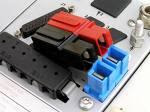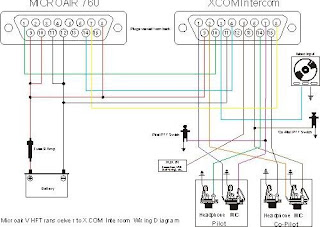Electricity plays an important role in man’s conquest for existence .It has been said that it is here with us since the beginning of the time.
In 600 B.C, Thales a Greek philosopher accidentally discovered static electricity. Noticing that his garment had bits of hair and straw, Thales decided to remove them by rubbing piece of amber stone on his clothes. To his surprise, several pieces of straw clung to the amber when rubbed on the clothes, the amber became electrified and it attracted the pieces of straw. Thales simply wrote the incident and did not do anything about it because he could not explain the mystery. He did not know that he had just discovered static electricity.
In 1600, William Gilbert, an English Physician was able to put an electrical charged on the objects by means of friction or rubbing. He observed that two materials when rubbed together received opposite charges, that is, one object got a positive charge and the other a negative charge. He also noticed that two oppositely charged materials attract each other. Gilbert experiment was a re-discovery of static electricity, the word static means standing still or at rest. The Greek word for amber stone is “ ELEKTRON” and so the term electricity came about.
Great persons who involved in the discovery of electricity:
1760- Benjamin Franklin, An American scientist, proved that atmospheric electricity (lightning) and static electricity are the same.
1800- Alessandro Volta, An Italian Professor, discovered the voltaic file by means of stocking zinc plate (-) and silver plate (+).
1819- Hans Christian Oestered, A Danish Physicist proved in an experiment that current electricity can produced a magnetic field.
1831 Michael Faraday, An English scientist discovered the first electric generator.
1831- Samuel Morse, developed the telegraph.
1868-George de Clanche, developed the first practical dry cell.
1878-Charles Brush, invented the arc lamp
1879- Thomas Alba Edison, perfected the first electric bulb
Sources of electricity
1.
Friction -It is a static electricity which is generated by rubbing two materials.
2.
Chemical action - It is a great deal of the world’s electricity produced by batteries. These devices generate a different potential means of chemical action.
3.
Heat action - Two dissolution metals bonded together in a junction when heated, exhibits a difference of potential. Such bond is called thermocouple. The trip of an iron wire, for example, may be welded to that of a copper wire. When, this junction is heated, the iron wire shows a positive charge and the copper wire has a negative charge. Electricity generated by heat action is called thermoelectric.
4.
Light action - Photo cells are semi-conduction devices which convert light electrical energy directly into electrical energy. Either sunlight or artificial illumination may be employed. This action is due to the ability of lights energy to free electrons from the atoms of the semi-conductor material. This process is called photo-electricity.
5.
Pressure - It is a difference of potential appears across the face of certain crystal such as quarts, when they are squeezed or stretched. This is called piezo-electricity.
6.
Mechanical action - All electricity in large useful amount is at present produced by rotating machines working with the use of magnets. These machines, known as generator, are turned by water power, gas engines or steam engines and sometimes by electric motor.
There are many different types of mechanical power plants to produce electrical energy.
Hydropower is an energy obtained from flowing water. Energy in water can be harnessed and used in the foot motive energy or temperature differences. The most common application is the dam.
Power produced by the fall of water from a higher to a lower level and extracted by means of waterwheels or hydraulic turbines. Hydro-power is a natural resource available wherever a sufficient volume of steady water flow exists.
Nuclear Power is the method in which steam is produced by heating water through a process called nuclear fission. In a nuclear power plant, a reactor contains a core of nuclear fuel, primary enriched uranium. When atoms of uranium fuel are hit by neutrons they fission (split), releasing heat neutrons.
Nuclear power is an electrical power produced from energy released by controlled fission or fusion of atomic nuclei in a nuclear reaction. Mass is converted into energy and the amount of released energy greatly exceeds that from chemical processes such as combustion.
Solar Power is a power derived from the energy of the sun. A radiant energy produced in the Sun as a result of nuclear fusion reactions. It is transmitted to the earth through space by electromagnetic radiation in quanta of energy called photons which interact with the earth’s atmosphere and surface.
Wind Power is the kinetic energy of wind or the extraction of this energy by wind turbines. Windmill machine converts wind into useful energy. This energy is derived from the force of wind acting on oblique blades or sails that radiate from a shaft. The turning shaft may be connected to machinery used to perform such work as milling grain, pumping water, or generating electricity. When the shaft is connected to a load, such as a pump, the device is typically called a windmill. When it is used to generate electricity, it is known as a wind turbine generator.
Fossil Fuel Power Plant (FFPP) – (also known as steam electric power plant in the US, thermal power plant in Asia, or power station in UK). The most common source of energy is fossil fuel. Fossil fuels include coal, oil, and natural gas. Fossil fuel is formed from the remains of plant and animals which live thousands of years ago. The burning of those fossil fuel provides energy which can be used to generate electricity.
Geothermal power comes from heat energy buried beneath the surface of the earth. In some areas of the country, enough heat rises close to the surface of the earth to heat underground water into steam which can be tapped for use in steamturbine plants. Geothermal Power is the energy extracted from the heat generated by natural concentrations of hot water and steam in the earth’s interior. It can be used in electric power generation and direct heat applications such as space heating and industrial drying processes.
Tides is another kind of energy that involves water. Ocean tides can be used to turn turbines to generate electricity. For this to be possible, a dam must be built across the month of a bay. Water then in trapped behind the dam at the high tide. At the low tide, the water is allowed to run out through the dam and used to turn on electrical generator.

































































